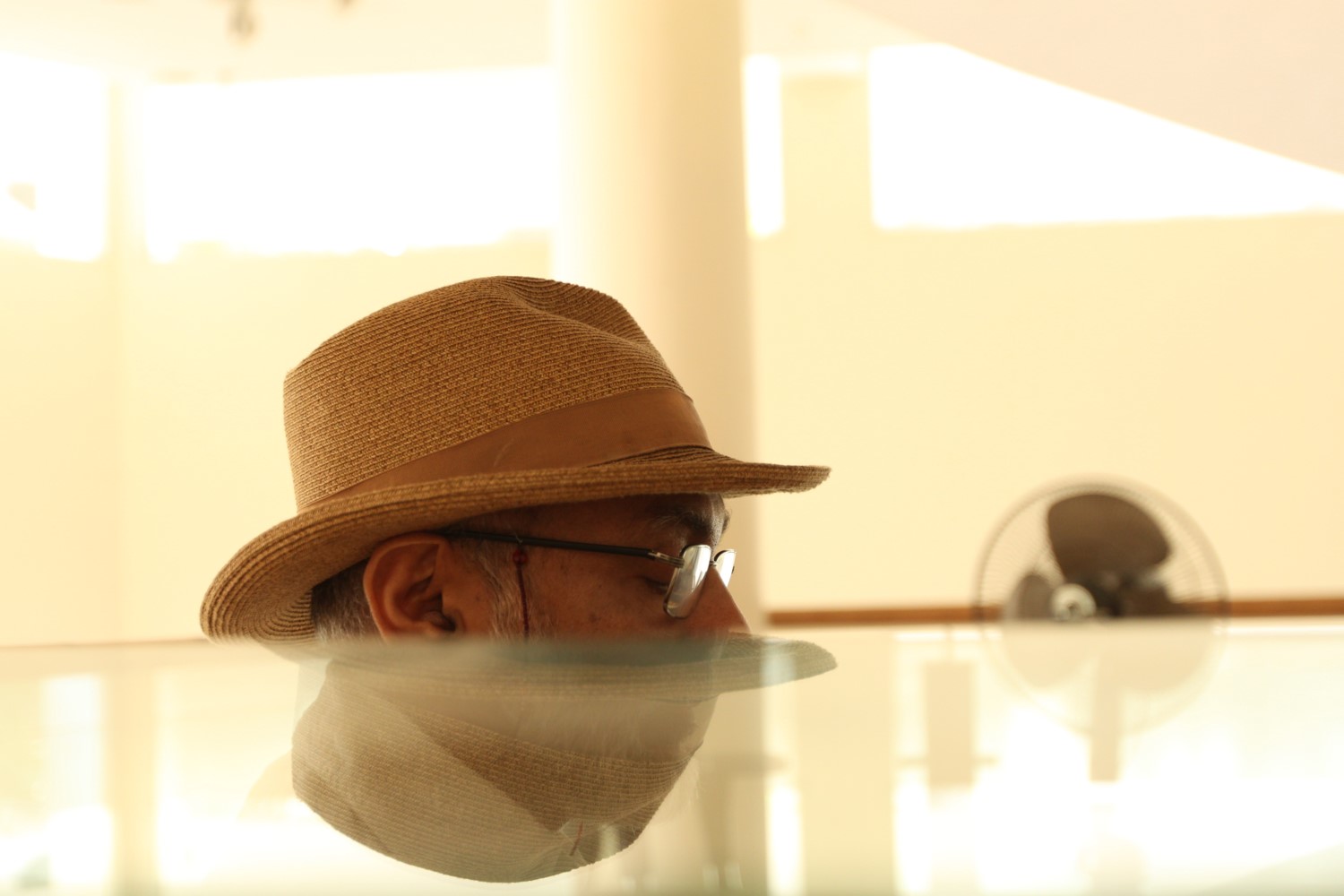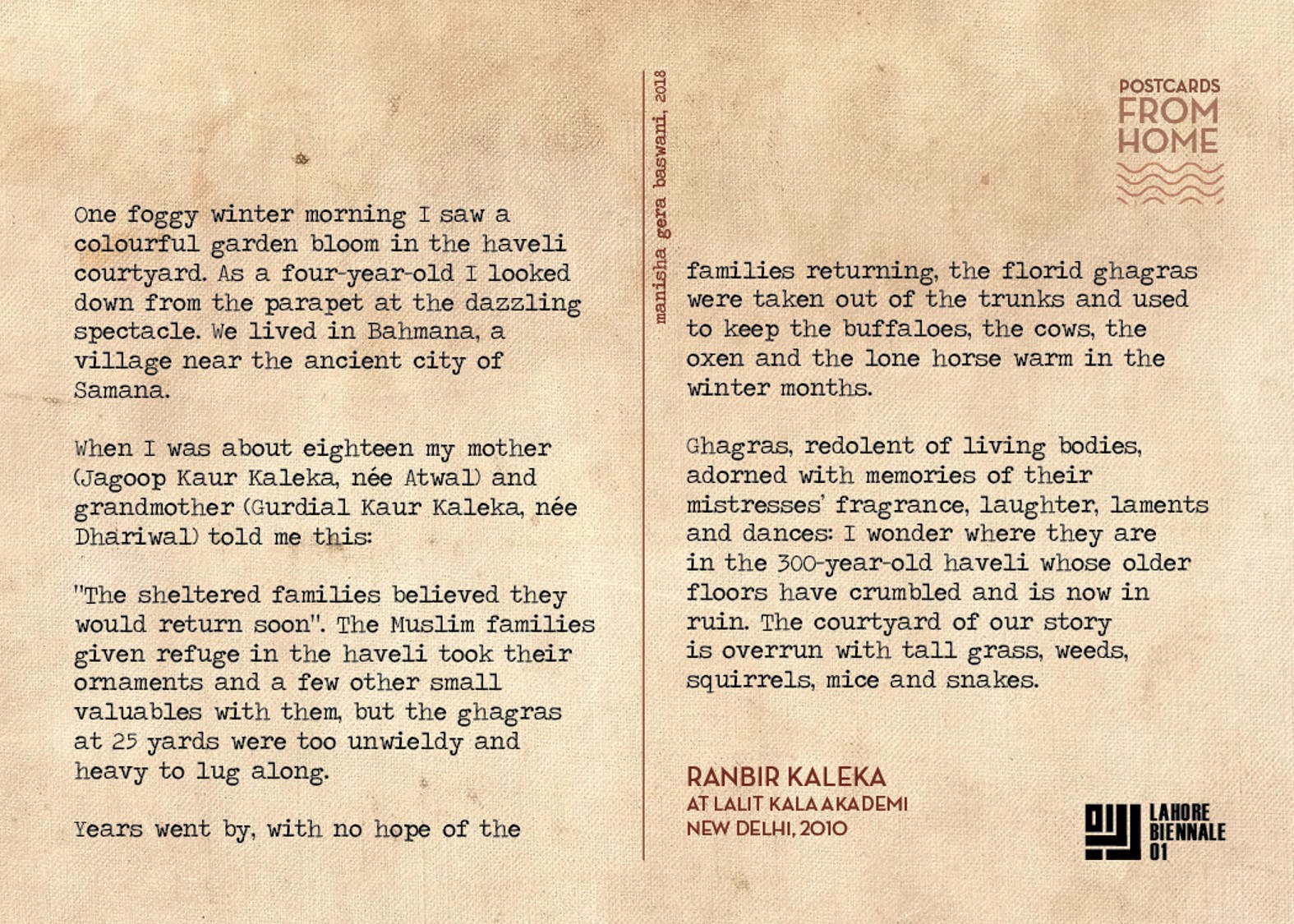Ranbir Kaleka
One foggy winter morning I saw a colourful garden bloom in the haveli courtyard. As a four-year-old, I looked down from the parapet at the dazzling spectacle.Lived in Bahmana, a village near the ancient city of Samana.
When I was about eighteen my mother (Jagoop Kaur Kaleka, nee Atwal) and grandmother (Gurdial Kaur Kaleka, nee Dhariwal) told me this:
“The sheltered families believed they would return soon”. The Muslim families given refuge in the haveli took their ornaments and a few other small valuables with them, but the ghagras at 25 yards were too unwieldy and heavy to lug along.
Years went by, with no hope of the families returning, the florid ghagras were taken out of the trunks and used to keep the buffaloes, the cows, the oxen and the lone horse warm in the winter months.
Ghagras, redolent of living bodies, adorned with memories of their mistresses’ fragrance, laughter, laments and dances: I wonder where they are in the 300-year-old haveli whose older floors have crumbled and is now in ruin. The courtyard of our story is overrun with tall grass, weeds, squirrels, mice and snakes.

